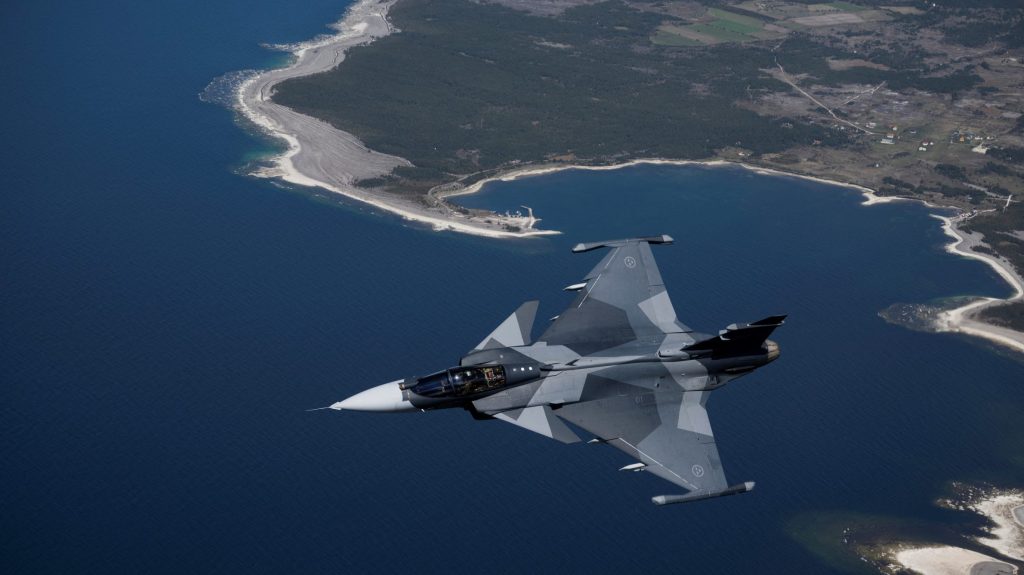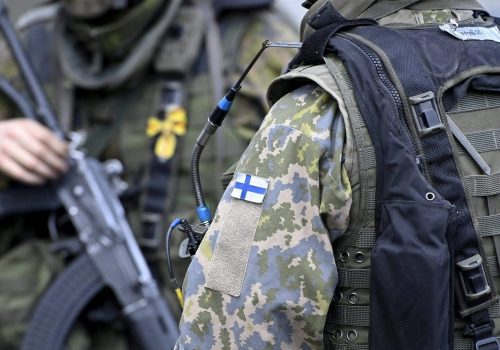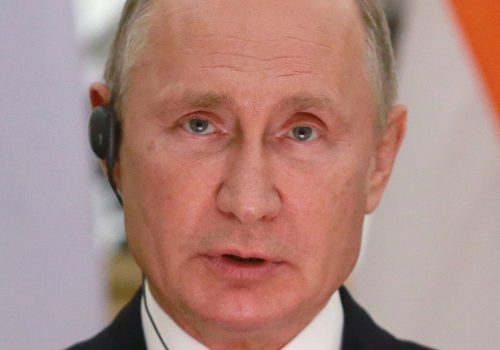
Sweden’s announcement this week that it will move forward, along with Finland, with plans to join NATO capped a dramatic transformation in public opinion from committed neutral nation to potential Alliance member. But more important from NATO’s perspective is the fact that Sweden’s unique geopolitical characteristics and its small yet advanced military are likely to make it a serious security provider—not merely a security consumer—in the heart of Northern Europe.
Swedes have been parrying aggressive Russian behavior for centuries, on land and at sea. Long a formidable power in the Baltic Sea region, Sweden fought several wars against Russia for regional hegemony from the late fifteenth century to the early nineteenth century. The last of these occurred just more than two hundred years ago and resulted in Sweden ceding to Russia much of what is today Finland; since then, Sweden has been ostensibly neutral—or, as Swedes prefer, nonaligned. But the Swedish rivalry with Russia over security and stability in the Baltic region continued unabated, including through the Cold War.
Historically, Swedish efforts to solve its security challenges with alliance systems—whether comprised of states within the Baltic region or outside it—have not been perceived as successful. This has resulted in heavily armed neutrality as the best means of safeguarding Swedish sovereignty, imbuing its strategic culture with the notion of defense and deterrence through strength. During most of the roughly twenty-five-year post-Cold War period, the absence of a serious Russian threat caused Sweden to dramatically reduce its defenses and broaden its strategic horizon beyond the Baltic.
But since Russia has returned as a major security threat in the region over the past decade or so, Sweden has been undergoing a paradigm shift, with both the Baltic Sea and the Arctic becoming key focal points for defense and security matters. As a member of the Alliance, Sweden is likely to bring this emphasis into the halls of NATO, adding its voice to those who think the Alliance must deal first and foremost with the Russian threat in these two strategically important regions.
Force multiplier
In terms of capabilities, Sweden also brings key strengths—even though like most European countries, it ended conscription, cut its military forces, and reduced its defense budget after the end of the Cold War. By the time the Soviet Union collapsed, Sweden maintained an active-duty force comprised of just one army brigade; but its reserve forces were massive, amounting to roughly 850,000. By the late 2000s, though, the reserve force had dwindled to 200,000 and capabilities across all services had been cut substantially.
Starting in the early 2010s, Sweden (like many European countries) began to boost its military as the Russian threat returned. But re-embracing a more robust defense posture hasn’t been smooth: It only resumed conscription in 2018 after an eight-year hiatus, resulting today in a reserve force of just 10,000. Moreover, the active-duty force remains only 14,600 as the Swedish military struggles to compete with the private sector for personnel.
Yet despite its size, Sweden maintains a relatively broad set of advanced capabilities, supported by its large, sophisticated defense industry. On land, this includes armored, mechanized, airborne, artillery, chemical/biological/nuclear-defense, engineer, and air-defense (including Patriot) units. Its inventory includes 120 German-built Leopard 2A tanks—thought to be the best tank in Europe and one of the best in the world. Sweden also produces its own infantry fighting vehicles, including the CV90 (itself billed as one of the top such vehicles in the world).
The Swedish Air Force includes nearly one hundred multi-role (and Swedish-built) Gripen JAS 39 jets, characterized by low maintenance requirements and short takeoff and landing capabilities. It also has a limited air-refueling capability and a squadron of five C-130 transport aircraft. In practical terms, this means that although smaller than its Italian or French counterparts, the Swedish Air Force is judged to be one of the most powerful in Europe and in the world.
Although the smallest of the three services, the Swedish Navy employs the domestically built Gotland diesel-electric submarine, one of the most advanced submarines in the world and the first non-nuclear-powered submarine to feature an air-independent propulsion system. This extends its underwater endurance from just a few days to weeks.
Finally, Sweden is one of the few European countries pursuing offensive cyber capabilities. The cyber-defense department of the Swedish Armed Forces Headquarters is aiming to significantly build up Swedish cyber capabilities through 2025. If recent exercises are any indicator, Swedish cyber capabilities are already among the most advanced in Europe.
From a funding perspective, Sweden steadily increased its defense budget over the past several years in an effort to improve capabilities, rebuild capacity, and boost readiness. The pace quickened significantly in 2020, when parliament approved a 40 percent increase in the defense budget—which is now slated to rise from $7.2 billion in 2022 to $11 billion by 2025, the largest increase in seventy years. While this would mean that Sweden still spends less than the NATO goal of 2 percent of gross domestic product, the center-left Swedish government recently announced that it intends to immediately increase defense spending by $318 million this year to reach the 2 percent target as early as 2028.
Today, Russia’s brutal second invasion of Ukraine has caused even more Swedes to conclude that NATO membership is necessary: Roughly half favor joining the Alliance, up from 36 percent in 2013, while only 22 percent oppose it. And if Finland joins, the proportion of Swedes who favor membership increases to nearly 60 percent.
This turnaround in Swedish perceptions is remarkable—and all a result of the Kremlin’s shocking aggression. If NATO allies ratify Sweden’s likely membership application, Stockholm looks set to make a positive contribution to Alliance security immediately. This contribution appears likely to only grow as Sweden devotes increasing resources and attention to countering the Russian threat in the Baltic, the Arctic, and across Eastern Europe.
John R. Deni is a research professor at the US Army War College’s Strategic Studies Institute and a nonresident senior fellow at the Atlantic Council. He’s the author most recently of Coalition of the unWilling and unAble. The views expressed are his own.
Further reading
Tue, May 17, 2022
How the US Senate could slow down Sweden and Finland’s NATO future
New Atlanticist By
Now isn't the time to debate for the sake of debating: The United States and Europe will be safer with Finland and Sweden in the Alliance.
Fri, May 13, 2022
Why Finland and Sweden can join NATO with unprecedented speed
New Atlanticist By Christopher Skaluba, Anna Wieslander
Both have put in the prescient and painstaking work to make a potential transition from partner to member so straightforward.
Tue, May 10, 2022
Will Putin use nuclear weapons in Ukraine? Our experts answer three burning questions.
New Atlanticist By
Our nuclear experts weighed in on the chances of Putin taking the fateful step, how he might do it, and how the West would likely respond.
Image: A SwedishJAS 39 Gripen E jet fighter flies over the Baltic Sea on May 11, 2022. Photo by TT News Agency/Henrik Montgomery via REUTERS



